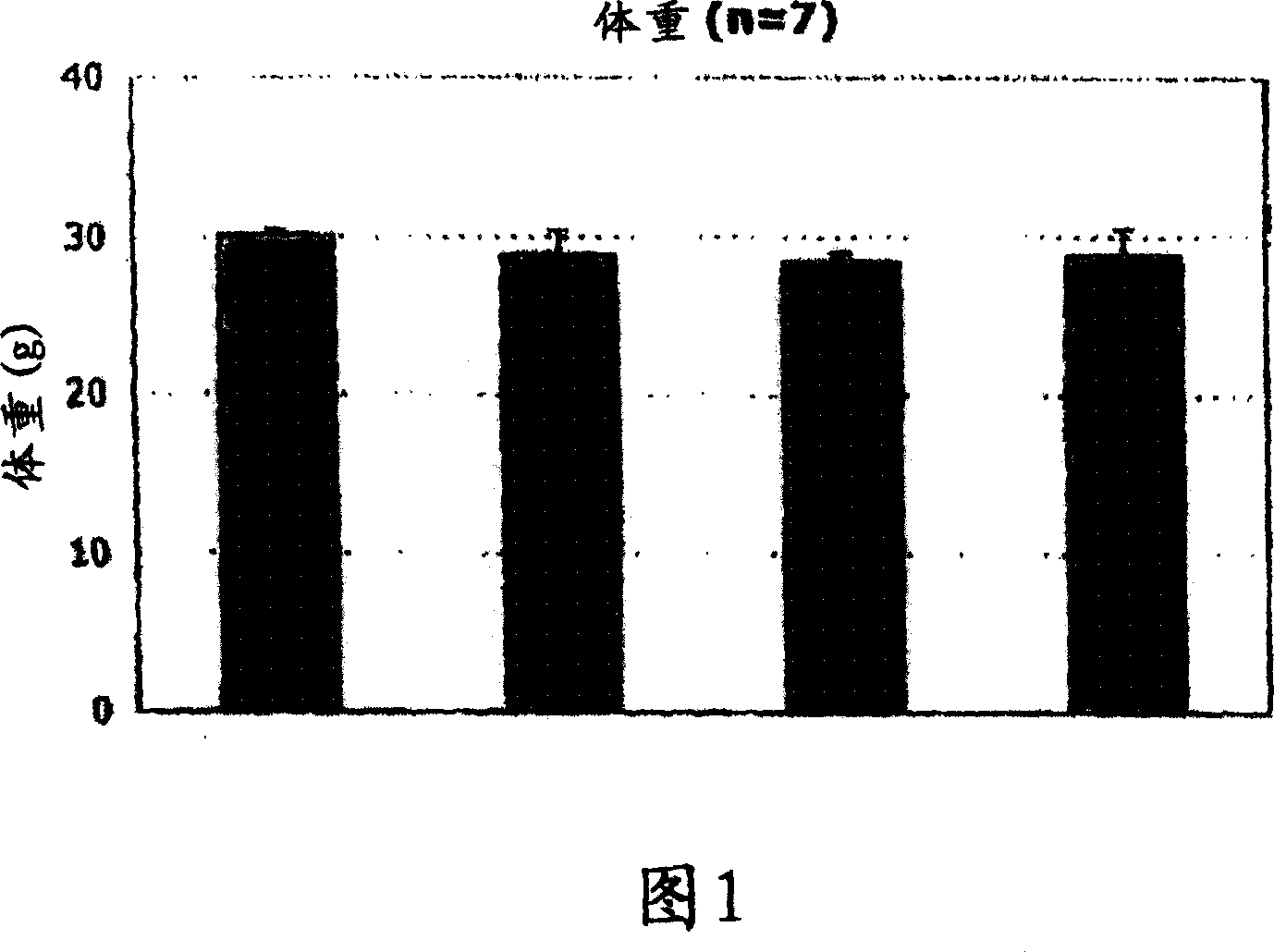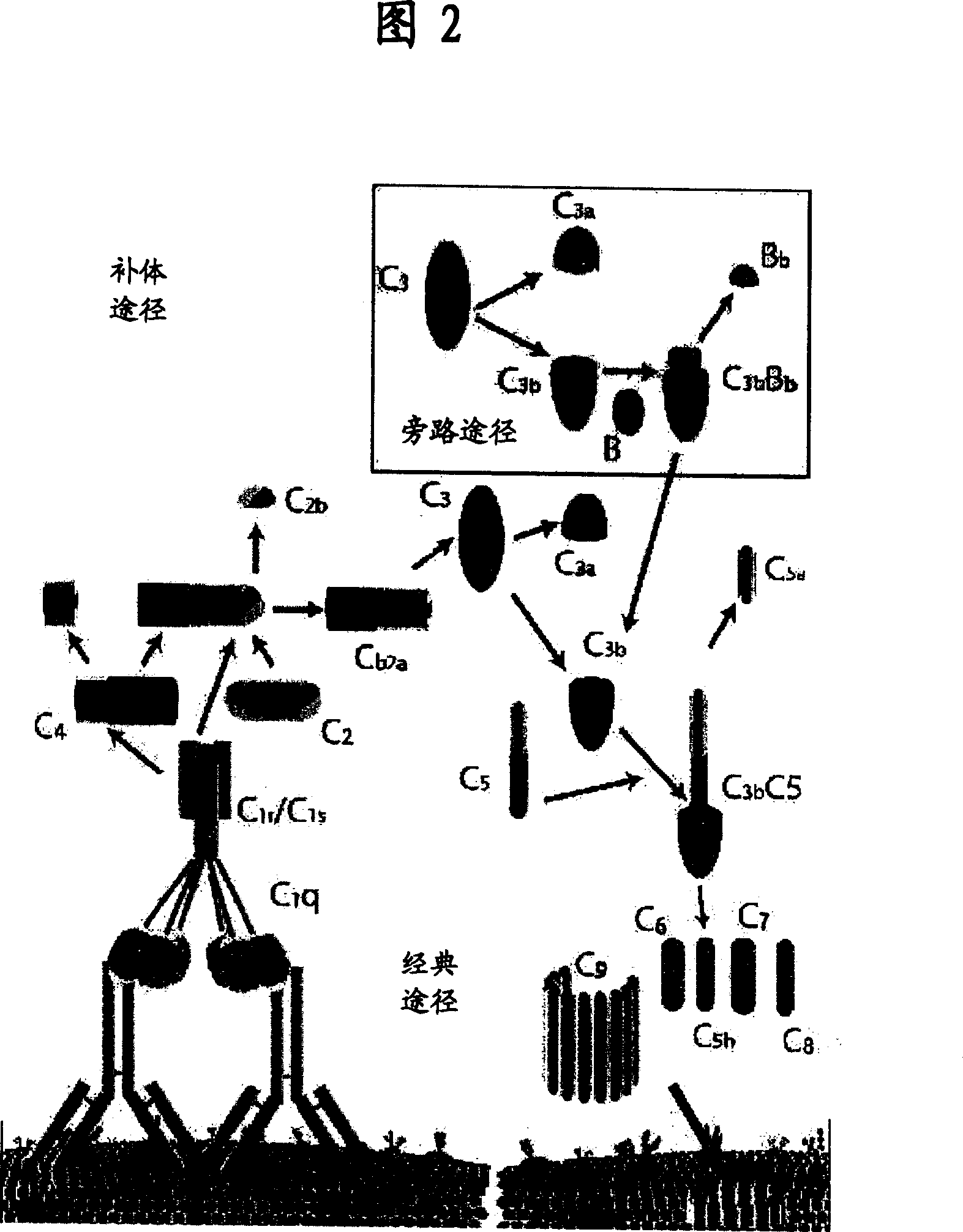Method and compositions for altering cell function
A composition and cathepsin technology, which can be used in drug combinations, pharmaceutical formulations, plant raw materials, etc., and can solve problems such as dangerous toxicity and reversal of beneficial effects.
- Summary
- Abstract
- Description
- Claims
- Application Information
AI Technical Summary
Problems solved by technology
Method used
Image
Examples
Embodiment 1
[0321] Materials and methods
[0322] animal management. Male C57BL / 6J mice were housed individually, and the following experimental diets were started immediately after weaning (21 days old). Mice were housed at the Shared Aging Rodent Facility at William S. Middleton Memorial Veterans Administration Medical Center (Madison WI). Temperature and humidity are kept at constant levels. Control interior lighting to provide a 12-hour light-dark cycle.
[0323] Experimental diets were manufactured by Harlan Teklad (Madison WI). The selenium content of the feed was determined by Covance Inc. (Madison WI). Five animals were included in each of the following treatment groups: selenium-deficient diet (SD); diet supplemented with selenomethionine (SM, obtained from Sigma, St.Louis, MO), the final selenium concentration in this diet was parts per million Parts per million; feed supplemented with sodium selenite (SS, Sigma), where the final selenium content i...
Embodiment 2
[0345] Dietary selenium alters gene expression in mouse gut
[0346] In the mouse gut and brain (e.g., cerebral cortex), dietary selenium (e.g., from various sources such as SeM, Sel-sod, and Sel-Plex) has been examined to alter physiology (e.g., physiological homeostasis) and expression patterns of various protein functional groups and various protein pathways (eg, expression patterns of proteins or genes).
[0347] Accordingly, it was an object of the present invention to determine whether the compositions and methods of the present invention alter the expression levels (eg, mRNA levels) of various genes. The set of genes analyzed is those typically associated with selenium. Gene expression levels were analyzed between mice supplemented with and without dietary selenium, or between mice fed different sources of selenium, as described above (see, eg, Table 1 below). When receiving selenium-deficient feed, feed containing selenomethionine (Se-meth, or SeM),...
Embodiment 3
[0354] Dietary selenium alters the expression levels of selenoprotein-encoding genes in a selenium-source-dependent manner
[0355] It is now known that selenium is incorporated into many selenoproteins in the form of selenocysteine, glutathione peroxidase (GSH-Px, see Example 2) is a typical example. Selenocysteine is specifically encoded by the UGA codon and is inserted into the polypeptide chain by a co-translational mechanism that overrides the normal function of UGA as a stop codon. In eukaryotes, efficient incorporation of selenocysteine at UGA codon positions requires cellular protein factors and a cis-acting structural signal usually localized in the 3'-untranslated region (3'-UTR) of mRNA, which The cis-acting signal consists of a selenocysteine insertion sequence (SECIS) in a characteristic stem-loop structure (see, e.g., Peterlin, et al. (1993), In Human Retroviruses; Cullen, Ed.; Oxford University Press: New York ; pp. 75-100; Le and Maizel, Theor. Biol. 138...
PUM
 Login to View More
Login to View More Abstract
Description
Claims
Application Information
 Login to View More
Login to View More - R&D
- Intellectual Property
- Life Sciences
- Materials
- Tech Scout
- Unparalleled Data Quality
- Higher Quality Content
- 60% Fewer Hallucinations
Browse by: Latest US Patents, China's latest patents, Technical Efficacy Thesaurus, Application Domain, Technology Topic, Popular Technical Reports.
© 2025 PatSnap. All rights reserved.Legal|Privacy policy|Modern Slavery Act Transparency Statement|Sitemap|About US| Contact US: help@patsnap.com



